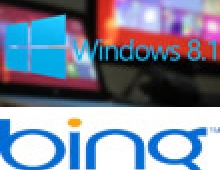
Windows 8 To Natively Support USB 3.0
Microsoft's upcoming Windows 8 operating system will natively
support USB 3.0 controllers, according to Microsoft's Dennis
Flanagan, Director of Program Management for the Devices and
Networking Group.
Previous versions of Windows, which continue
to require separate drivers for USB 3.0 controllers.
"The decision to invest in USB 3.0 was an easy one to make, but doing so without compromising the existing USB ecosystem was a big challenge to overcome," Flanagan wrote on a blog post. "Our design had to follow the revised 3.0 specification precisely in order to enable emerging USB 3.0 hardware. There are also billions of older USB devices that Windows must remain compatible with. How do you write a single piece of software to enable the latest technology on evolving hardware, while making sure it still works with 10 billion existing devices in homes and offices across the world?"
In order to maintain compatibility with almost all the USB 3.0 devices, Microsoft designed a new USB software stack for the new USB 3.0 controllers while maintaining existing interfaces and behaviors, ensuring every device and driver will work. For older controllers, Microsoft retained its existing software stack.
However, with over 10 billion USB devices available worldwide, Microsoft had also to think outside the box in order to ensure compatibility with Windows 8.
"We needed to develop a smart device test strategy," Flanagan said. After analyzing the device statistics, Microsoft broke devices into three main categories: Device popularity, Chipset and High-profile and challenging devices.
When looking at the telemetry sources for the most popular devices, Microsoft noticed a pattern. Each device class (keyboard, webcam, printers, storage, etc.) had a handful of prevalent manufacturers with just a few main product lines. After projecting these findings, the company could represent 70-80% of devices with a few hundred devices. Testers use the mathematic term "equivalence classing" to describe this work.
Microsoft also looked deeper at the actual circuit design. Just like humans, devices that appear very different on the outside are pretty similar on the inside. A relatively small number of chipset makers are embedded in devices, so Microsoft chose to represent their USB IP with development boards.
Despite the various compatibility tests, there were still some high-profile and challenging devices available at the market, which Microsoft had to test seperately.
"We were able to reduce the USB compatibility effort to roughly 1000 unique devices that we regularly test in the Windows labs. We ensure the devices get recognized correctly when connected to PCs, that they sleep and resume appropriately to conserve power, and that they are able to withstand various stress conditions. Our telemetry data indicates that over 90% of devices rely on the 16 class drivers in Windows, but for the more customized devices, we verify that their drivers get seamlessly downloaded from Windows Update whenever possible (the device maker needs to cooperate to support this scenario). With USB 3.0 providing full backwards compatibility, older drivers will still work without any changes," Flanagan added.
With throughput up to 10 times faster than USB 2.0 and improved power management that results in longer battery life, USB 3.0 introduces compelling reasons to improve the world?s most popular PC interface. By 2015, all new PCs are expected to offer USB 3.0 ports, and over 2 billion new "SuperSpeed" USB devices will be sold in that year alone.
"The decision to invest in USB 3.0 was an easy one to make, but doing so without compromising the existing USB ecosystem was a big challenge to overcome," Flanagan wrote on a blog post. "Our design had to follow the revised 3.0 specification precisely in order to enable emerging USB 3.0 hardware. There are also billions of older USB devices that Windows must remain compatible with. How do you write a single piece of software to enable the latest technology on evolving hardware, while making sure it still works with 10 billion existing devices in homes and offices across the world?"
In order to maintain compatibility with almost all the USB 3.0 devices, Microsoft designed a new USB software stack for the new USB 3.0 controllers while maintaining existing interfaces and behaviors, ensuring every device and driver will work. For older controllers, Microsoft retained its existing software stack.
However, with over 10 billion USB devices available worldwide, Microsoft had also to think outside the box in order to ensure compatibility with Windows 8.
"We needed to develop a smart device test strategy," Flanagan said. After analyzing the device statistics, Microsoft broke devices into three main categories: Device popularity, Chipset and High-profile and challenging devices.
When looking at the telemetry sources for the most popular devices, Microsoft noticed a pattern. Each device class (keyboard, webcam, printers, storage, etc.) had a handful of prevalent manufacturers with just a few main product lines. After projecting these findings, the company could represent 70-80% of devices with a few hundred devices. Testers use the mathematic term "equivalence classing" to describe this work.
Microsoft also looked deeper at the actual circuit design. Just like humans, devices that appear very different on the outside are pretty similar on the inside. A relatively small number of chipset makers are embedded in devices, so Microsoft chose to represent their USB IP with development boards.
Despite the various compatibility tests, there were still some high-profile and challenging devices available at the market, which Microsoft had to test seperately.
"We were able to reduce the USB compatibility effort to roughly 1000 unique devices that we regularly test in the Windows labs. We ensure the devices get recognized correctly when connected to PCs, that they sleep and resume appropriately to conserve power, and that they are able to withstand various stress conditions. Our telemetry data indicates that over 90% of devices rely on the 16 class drivers in Windows, but for the more customized devices, we verify that their drivers get seamlessly downloaded from Windows Update whenever possible (the device maker needs to cooperate to support this scenario). With USB 3.0 providing full backwards compatibility, older drivers will still work without any changes," Flanagan added.
With throughput up to 10 times faster than USB 2.0 and improved power management that results in longer battery life, USB 3.0 introduces compelling reasons to improve the world?s most popular PC interface. By 2015, all new PCs are expected to offer USB 3.0 ports, and over 2 billion new "SuperSpeed" USB devices will be sold in that year alone.



















